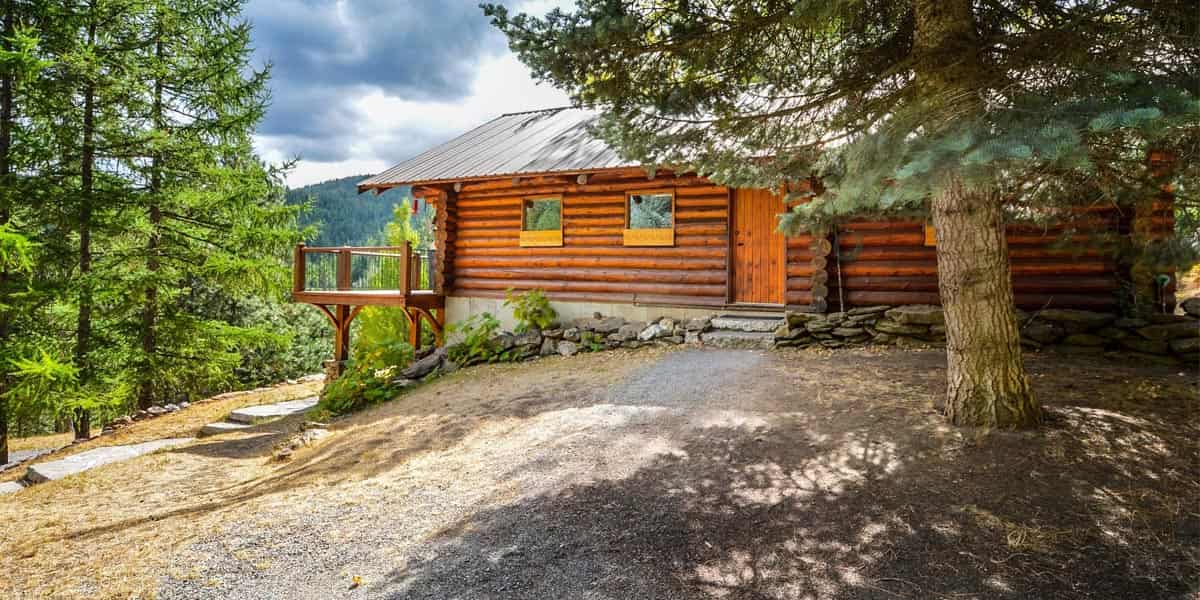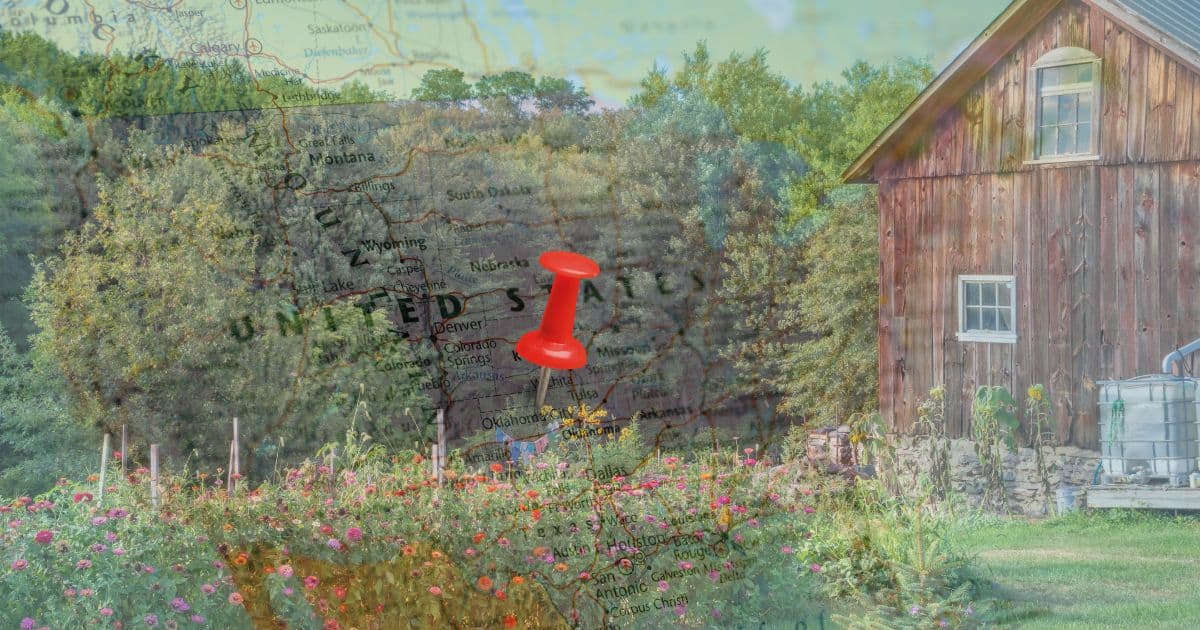Off grid living best states: Embark on a journey to discover the ideal locations for embracing self-sufficiency and a simpler life. This isn’t just about escaping the grid; it’s about strategically choosing a location that maximizes your chances of success. We’ll delve into crucial factors like climate, land availability, resource access, community support, and legal considerations, painting a comprehensive picture to help you make an informed decision.
Prepare to explore the possibilities and unlock the secrets to thriving off the grid.
From the sun-drenched deserts to the lush forests, the United States offers a diverse range of environments perfect for those seeking an off-grid lifestyle. However, navigating the complexities of land acquisition, resource management, and legal compliance can be daunting. This guide cuts through the noise, providing practical advice and insightful comparisons to help you identify the best state for your unique off-grid aspirations.
We’ll explore everything from optimal climates for solar energy to the legalities of building your dream off-grid home.
Best States for Off-Grid Living
Embarking on an off-grid lifestyle requires careful consideration of numerous factors, and climate plays a pivotal role in determining the feasibility and comfort of your chosen location. The ideal climate offers a balance of resources and manageable weather patterns, minimizing the challenges inherent in self-sufficiency. Understanding the nuances of temperature, precipitation, and extreme weather events is crucial for successful off-grid living.
Climate Considerations for Off-Grid Living
Selecting a state for off-grid living necessitates a thorough evaluation of its climate. Extreme temperatures, excessive rainfall, or prolonged droughts can significantly impact the viability and sustainability of your off-grid endeavors. Conversely, a moderate climate can reduce energy consumption and simplify resource management. The following table provides a comparative overview of several states, considering average annual temperature and rainfall as key indicators of climate suitability for off-grid living.
Note that this is a simplified overview and microclimates within each state can vary significantly.
Obtain direct knowledge about the efficiency of amish off grid living through case studies.
| State | Average Annual Temperature (°F) | Average Annual Rainfall (inches) | Climate Suitability for Off-Grid Living |
|---|---|---|---|
| Oregon | 48 | 38 | Medium |
| Colorado | 45 | 16 | Medium |
| New Mexico | 58 | 14 | High |
| Montana | 42 | 15 | Medium |
| Idaho | 45 | 17 | Medium |
Challenges of Extreme Weather in Off-Grid Living
Extreme weather events pose significant challenges to off-grid living, requiring robust preparation and mitigation strategies. Hurricanes, for instance, can cause widespread damage to structures and infrastructure, leading to power outages and disruptions in water supply. Blizzards bring heavy snowfall and freezing temperatures, necessitating effective insulation and alternative heating sources. Droughts, on the other hand, create water scarcity, impacting sanitation, agriculture, and even fire safety.Hurricanes necessitate the construction of hurricane-resistant structures, the establishment of emergency water storage, and the development of backup power generation systems.
Blizzards demand well-insulated homes, sufficient firewood or alternative heating sources, and preparedness for extended periods of isolation. Droughts necessitate rainwater harvesting systems, efficient irrigation techniques (if applicable), and fire prevention measures.
Energy Implications of Different Climates
Climate significantly influences the effectiveness of renewable energy sources, particularly solar power. Sunny regions with high solar irradiance benefit from increased solar panel efficiency, resulting in greater energy production. Cloudy regions, however, experience reduced solar panel output, requiring larger systems or supplementary energy sources to meet energy demands. For example, New Mexico’s high solar irradiance makes it particularly well-suited for solar-powered off-grid living, while Oregon’s frequent cloud cover might necessitate a more diversified energy approach, potentially incorporating wind power or hydroelectric generation.
The choice of renewable energy system should always be tailored to the specific climate of the chosen location to ensure energy independence.
Land Availability and Costs in Top States: Off Grid Living Best States

Embarking on the off-grid journey requires careful consideration of land acquisition. Securing a suitable plot at a reasonable price is paramount to the success of your self-sufficient lifestyle. This section delves into the specifics of land availability and costs in three states known for their affordability and suitability for off-grid living, offering insights into navigating the legal landscape of land ownership.
Land Availability and Costs in Three States, Off grid living best states
Finding the perfect piece of land for your off-grid haven depends heavily on location and the specific needs of your project. Below, we examine three states offering a range of options for those seeking affordable and accessible land. Note that prices are averages and can vary widely based on location, features, and market conditions. Always conduct thorough due diligence before purchasing any property.
- New Mexico: Average land prices range from $500 to $5,000 per acre, depending on location and proximity to amenities. Zoning regulations vary considerably by county, with some areas more lenient towards off-grid living than others. Common lot sizes range from 5 to 40 acres. Remote areas in Northern New Mexico tend to offer lower prices per acre, while land closer to towns or with access to utilities commands higher costs.
For example, a remote 20-acre parcel in a sparsely populated county might cost around $4,000, while a similar parcel closer to a small town could be double that price.
- Montana: Land in Montana offers a diverse range of options, with prices fluctuating greatly based on location and accessibility. Expect to pay between $1,000 and $10,000 per acre, or even more in desirable areas. Zoning regulations are generally less restrictive than in many other states, particularly in more rural areas. Typical land parcels can range from 10 to 160 acres or more.
Remote areas in Eastern Montana often present more affordable options compared to the more developed Western regions. A remote 40-acre parcel in Eastern Montana could cost around $6,000, while a comparable plot near a town in Western Montana could easily exceed $20,000.
- Texas: Texas boasts vast expanses of land suitable for off-grid living. Prices vary widely, ranging from under $1,000 per acre in remote West Texas to several thousand dollars per acre in more accessible areas. Zoning laws vary significantly by county, so careful research is crucial. Common lot sizes range from 5 to 100 acres or more.
Rural West Texas typically offers the most affordable land, while areas closer to major cities or with existing infrastructure command higher prices. A 20-acre plot in remote West Texas could cost approximately $2,000, while a similar-sized parcel closer to a larger town might cost $8,000 or more.
Legal Aspects of Acquiring Land for Off-Grid Living
Successfully acquiring land for off-grid living requires understanding the legal implications. This involves more than just finding a suitable property and making an offer. Thorough due diligence is essential to avoid potential problems.Property taxes are a recurring cost associated with land ownership. Rates vary by state and county, impacting your annual expenses. It’s crucial to understand the tax rate for your chosen location before purchasing.
For example, property taxes in rural areas of New Mexico might be lower than in more developed parts of the state.Easements, which grant rights to others to use your property for specific purposes (like utility lines or access roads), can significantly impact your property rights and potential development plans. Review property records carefully to identify any existing easements before purchase.
A thorough title search, conducted by a qualified professional, is crucial to uncover any potential encumbrances on the property.
Cost Comparison: Rural vs. Remote Locations
Generally, land in more remote locations is significantly cheaper per acre than land in rural areas with better access to roads, utilities, and services. The trade-off is often a greater degree of isolation and the need for self-sufficiency in terms of water, electricity, and waste disposal. For instance, a 10-acre parcel in a remote area of Montana might cost $5,000, while a similar-sized parcel in a more accessible rural area could cost $15,000 or more.
This difference reflects the value placed on convenience and proximity to infrastructure. The decision of whether to prioritize affordability and remoteness or convenience and accessibility is a crucial one in planning your off-grid lifestyle.
Community and Social Aspects of Off-Grid Living

Embarking on an off-grid lifestyle involves more than just self-sufficiency in food and energy; it necessitates a re-evaluation of one’s social interactions and community connections. The level of social engagement and the types of support networks available vary significantly depending on the population density of the chosen location. Successfully navigating this aspect of off-grid living is crucial for both mental well-being and practical assistance.The social dynamics of off-grid living differ dramatically between densely and sparsely populated states.
In densely populated areas, while opportunities for direct, daily interaction with neighbors might be more frequent, finding like-minded individuals focused on sustainable living can require more effort. Sparsely populated states, conversely, often boast a stronger sense of community among those embracing self-sufficiency, fostered by shared challenges and mutual reliance. However, this proximity can also mean less anonymity and a higher degree of interdependence.
Social Interactions in Densely vs. Sparsely Populated Areas
Off-grid living in a densely populated state, such as California or New York, presents unique social challenges. While neighbors might be readily available, finding individuals with shared off-grid interests might require active searching through online communities and local events. Conversely, states with lower population densities, such as Montana or Wyoming, often see stronger bonds between neighbors due to the increased reliance on each other for assistance and shared resources.
This inherent reliance can foster a stronger sense of community, but it can also present challenges regarding personal space and differing lifestyles. For example, a highly populated area might offer the option of remaining largely anonymous, while a small, close-knit community will likely demand more participation and interaction.
Resources and Support Networks for Off-Grid Communities
The modern age offers several avenues for connecting with and learning from others pursuing off-grid lifestyles. Online forums, such as those dedicated to homesteading, permaculture, and sustainable living, provide platforms for exchanging information, asking questions, and finding solutions to common challenges. These virtual spaces foster a sense of community that transcends geographical boundaries. Furthermore, many regions have local groups and workshops focusing on specific off-grid skills.
These in-person gatherings offer opportunities for hands-on learning, skill-sharing, and building personal relationships with like-minded individuals. Examples include workshops on water harvesting, solar panel installation, and sustainable gardening techniques, often organized by local community centers or environmental organizations.
Importance of Community Relationships and Self-Sufficiency
Strong community relationships are vital for successful off-grid living. While self-sufficiency is a cornerstone of this lifestyle, complete isolation is rarely practical or desirable. Shared knowledge, mutual support, and collaborative problem-solving are essential for overcoming challenges such as equipment repair, emergency situations, and the simple exchange of goods or services. For instance, a broken water pump might require the assistance of a neighbor with mechanical skills, or a surplus of harvested vegetables could be shared with others in the community, fostering a reciprocal system of support.
The balance between self-reliance and community engagement is key to building a sustainable and fulfilling off-grid existence. It’s not about complete isolation, but rather a strategic integration of independence with collaborative community spirit.
The quest for the perfect off-grid haven is a deeply personal one, but with careful planning and consideration of the factors Artikeld above, you can significantly increase your chances of success. Remember, off-grid living is a journey of self-reliance and connection with nature, demanding both meticulous preparation and a spirit of adventure. By weighing the pros and cons of different states, you can confidently choose a location that aligns with your vision, allowing you to build a sustainable and fulfilling life beyond the grid.


